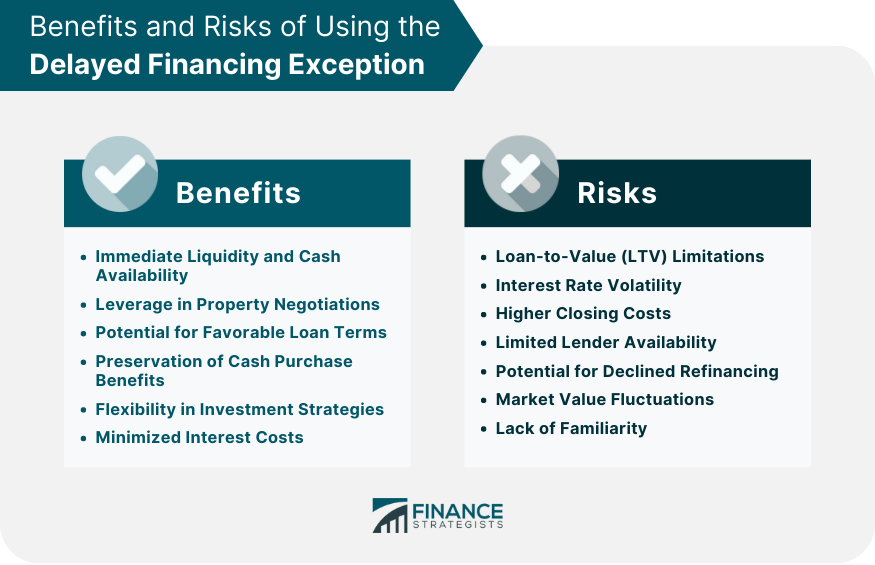In our daily lives, opportunities to save money abound, often hidden behind the initial price tag. Whether you’re eyeing a new car, a used vehicle, or simply trying to get a better deal on other significant purchases, the power of negotiation is an invaluable skill. Many people shy away from haggling, fearing confrontation or feeling unprepared, but with the right strategies and a bit of confidence, you can significantly reduce costs and ensure you’re getting true value.
As a seasoned media editor, with years of experience observing consumer trends and behaviors, I’ve seen firsthand how empowered individuals can transform their purchasing experiences. This isn’t just about saving a few dollars; it’s about taking control, understanding market dynamics, and walking away from a transaction knowing you’ve made a smart, informed decision. The principles we’re about to explore, while often illustrated with examples from car buying, are universally applicable to almost any scenario where prices are flexible.
Car dealerships, in particular, can feel like a formidable battleground, with trained professionals ready to navigate your every move. But remember, they are willing to work with you. The key isn’t aggressive confrontation, but rather informed, strategic dialogue. By equipping yourself with key phrases, essential research, and a clear understanding of the process, you can turn what often feels like a daunting challenge into a rewarding opportunity to save thousands. Let’s dive into the foundational steps that will empower you from the very start.

1. Determine the True Market Value
Before you even think about setting foot on a lot or making an inquiry, the absolute first step in any successful negotiation is to thoroughly understand the market value of what you’re trying to buy. This isn’t just a suggestion; it’s the bedrock of your entire strategy. Without a solid reference point, you’re essentially negotiating blind, susceptible to whatever price the seller decides to present.
For vehicles, this means diving deep into resources like Edmunds, which provides what they call the ‘Edmunds Suggested Price,’ formerly known as True Market Value. This figure is their recommendation for what you should pay, excluding taxes or fees, and it’s meticulously calculated based on millions of data points. Factors such as supply, demand, available incentives, specific options, and recent transactions in your area all contribute to this crucial number.
On Edmunds, if you’re looking at new cars, you’ll find a ‘pricing’ box prominently displayed near the top of the page, showing the Edmunds Suggested Price, which varies by trim level. For used cars, the same box presents a price range, making it advisable to focus on a specific piece of inventory. Edmunds also features a price details section for actual vehicles listed for sale, rating the price as ‘great,’ ‘good,’ ‘fair,’ or ‘high,’ and indicating how much it is above or below market.
While Edmunds’ suggested pricing represents an average, your ultimate objective is to secure a price at or ideally below it. Achieving a price slightly above this average is still acceptable, especially for highly desirable items. The goal is to be informed enough to recognize a truly fair deal and confidently push for it, using factual data rather than just a wish for a lower price.
Read more about: Kanye West’s Rollercoaster Fortune: Unpacking the Controversial Origins and Billion-Dollar Debates That Defined His Stardom

2. Gather Multiple Price Quotes.
Once you’ve armed yourself with a clear understanding of the market value, the next critical step is to cast a wide net and gather multiple price quotes. This tactic is universally effective, whether you’re buying a car, negotiating a service, or purchasing a significant item. The goal here is to create competition among sellers, which inherently drives prices down and gives you leverage.
For car buyers, the recommendation is to reach out to several nearby dealerships through calls, emails, or texts. You can also utilize platforms like Edmunds or dealer websites. When calling, ask for the internet sales manager and, in that discussion, verify the vehicle is in stock and has all the options you want. This clarity prevents misunderstandings and wasted time later.
With a few solid price quotes in hand, you’re no longer reliant on a single offer; this collection becomes a powerful tool. For new vehicles, Edmunds even offers a price checker tool, allowing you to input a quote and instantly get a rating – fair, good, or great deal. This objective assessment refines your understanding of each offer’s competitiveness.
Having multiple quotes allows you to adopt various negotiation strategies, depending on your comfort level. For those less comfortable with direct negotiation, the path of least resistance is viable: simply take the lowest offer presented. For those inclined to push further, these quotes serve as concrete evidence for subsequent negotiations, enabling you to ask another dealer to match or even beat a competitor’s price.
Read more about: Aron Bell, Last Brother of a World War II Resistance Group, Dies at 98: A Legacy of Courage and Rescue

3. Explicitly State Your Desire to Discuss Purchase Price Only
One of the most common and effective tactics salespeople employ is to redirect your focus from the total purchase price to the more digestible figure of a monthly payment. This strategy is designed to obscure the actual cost of the item and, if left unchecked, can lead you to pay more than you intended. It’s a subtle but powerful psychological play, and being aware of it is your first line of defense.
A typical conversational opener from a salesperson might be, ‘What monthly payment would comfortably fit into your budget?’ This question is a trap. When the price of an item is presented as a monthly payment, it becomes significantly harder to track the true overall cost, especially when factors like loan terms and interest rates are manipulated to achieve a desired monthly figure.
It is absolutely crucial that you sidestep this question firmly and politely. Your response should clearly communicate your priority. A direct and effective phrase to use is: ‘I will talk about financing later and that I just want to discuss the purchase price of the car for now.’ This statement reclaims control of the conversation, shifting the focus back to the core transaction: the actual price of the vehicle itself.
If a salesperson hesitates, balks, or outright refuses to discuss the purchase price independently, consider it a significant red flag. This behavior often signals that they are more interested in leveraging financing to increase their profit margins than in offering a transparent, fair deal. Remember, your objective is to understand and negotiate the total ‘out-the-door’ price, not just an appealing monthly installment.
Read more about: The Hidden Engineering of Your Future: Unpacking the Power and Precision of a Last Will and Testament
4. Justify Your Lower Offer with Market Data
Once the salesperson presents their initial offer, particularly after you’ve steered the conversation away from monthly payments and towards the actual purchase price, it’s your turn to respond strategically. Simply saying ‘I want a lower price’ without context is far less effective than demonstrating that your request is backed by solid research and competitive intelligence.
This is where all your upfront market value research and collected price quotes come into play. You’re not just asking for a discount; you’re justifying why a specific, lower price is fair and achievable. This approach transforms your request from a mere wish into an informed business proposition, which even trained sales professionals respect.
An expert phrase to use in this situation is: ‘I’ve done a lot of research on the market value of this vehicle and have a good idea of what it sells for because we’ve shopped around a bit. If you can beat this price (here’s where you present your best price quote printout from another dealership), we will have a deal.’ This statement is concise, powerful, and achieves several key objectives simultaneously.
First, it immediately signals to the salesperson that you are an informed buyer, making it clear they can’t easily inflate prices. Second, by explicitly stating that you have other, better offers in hand and are willing to present them, you create direct competitive pressure. The salesperson instantly recognizes that there are concrete prices to beat, driving them to the lower end of their pricing structure. This approach is highly effective for both new and used items.
Read more about: Home Refinancing 101: Your Essential Guide to Knowing When to Refinance — And When to Hold Off for Bigger Savings

5. Make a Strategic Opening Offer for Used Cars
Negotiating the price of a used car can sometimes feel less straightforward than a new one, largely because ‘apples-to-apples’ comparisons are not always perfectly possible due to unique history, mileage, and condition. However, this doesn’t mean you can’t approach it with a clear strategy and a strong opening offer.
Your primary goal when buying a used car is to formulate an offer that is as low as you can reasonably go, while still remaining within the realm of what’s considered plausible – ‘in the ballpark.’ Platforms like Edmunds can provide a range indicating what constitutes a ‘fair,’ ‘good,’ or even ‘great’ deal for the specific vehicle you’re interested in.
For vehicles sourced elsewhere, an appraisal report tool (like Edmunds’) is invaluable. By inputting details about trim, options, and condition, you can get a rough idea of the dealership’s potential ‘trade-in’ price. Comparing this to the estimated ‘dealer retail’ value gives you a powerful target range, and further research into comparable local vehicles solidifies your understanding of a fair market price.
Once researched, make your initial offer, allowing room for a counteroffer. For instance, if a $30,000 vehicle’s ‘great deal’ is $27,500, start at $27,000. Going in, know your opening offer, how you’ll counter, and your absolute highest price. This foresight prevents flustering and ensures you negotiate like a true professional, turning a daunting task into a strategic win.
Read more about: Beyond the Red Carpet: Unpacking Celebrity Endorsements in the Automotive Industry and the Brands Forging Their Own Path

6. Confront Intimidation with Confidence and Research
It’s a common scenario: many buyers feel a distinct reluctance to make a genuinely low offer, particularly in a high-stakes environment like a car dealership. The apprehension stems from a fear that the salesperson might react negatively—laughing, becoming angry, or acting insulted. This emotional barrier can often prevent buyers from pushing for the best possible deal.
However, it’s crucial to recognize that this fear is often misplaced. Consider the salesperson’s own strategy: they typically start with a higher offer, expecting to work their way down. They are doing the very thing you are hesitant to do, just from the opposite direction. Understanding this dynamic can be incredibly empowering and helps normalize the negotiation process as a standard business practice.
The most potent weapon against intimidation is thorough preparation. When you have diligently researched the market value, gathered competitive quotes, and established your target price, you gain an undeniable sense of confidence. This research equips you with the factual knowledge to discern a good price from an inflated one and to know precisely when and how to counter effectively, allowing you to maintain a calm, assertive demeanor.
Read more about: The Bitter Truth: Unpacking Corrupt Agendas Unveiled Across Global Institutions and Industries

7. Prioritize Preparation Over Haste
In the world of negotiation, time truly is money, but not always in the way you might think. Rushing into a purchase, especially a significant one like a car, almost invariably puts you at a disadvantage. Salespeople thrive on urgency and unpreparedness, as these factors make buyers more susceptible to high-pressure tactics and less likely to secure a favorable deal.
The first golden rule here is simple yet profound: ‘Don’t buy a car in a hurry (unless you have no choice).’ If you find yourself in a situation where you urgently need a vehicle, your bargaining power is severely diminished. When you have the luxury of time, you can meticulously execute all the necessary research and comparison shopping without the emotional burden of immediate need.
Equally critical is the imperative: ‘Don’t go into the car dealership unprepared.’ An unprepared buyer is a dream for any salesperson. They can easily lead you down a path of offer-counteroffer negotiations before you’ve even had a chance to properly assess the situation or solidify your strategy. Preparation means knowing your preferred car’s reliability, safety features, and precise pricing information for specific makes, models, years, and trims well in advance.
Always remember the fundamental divergence in priorities: you want a great deal on a car that perfectly aligns with your budget and lifestyle, while the dealer aims to maximize their profit. They will try to inject emotion into the process, hoping the ‘new car smell’ and aspirational images cloud your judgment. By prioritizing meticulous preparation and resisting haste, you empower yourself to make a rational, data-driven decision.
Alright, you’ve laid the foundation, done your homework, and you’re feeling confident. Now it’s time to dive into the advanced strategies that will really seal the deal and ensure you walk away with the absolute best price. This isn’t just about small savings; these tactics can literally save you thousands, putting more money back into your pocket where it belongs. Let’s optimize every aspect of your purchase, from final costs to financing and beyond.
Read more about: The 11 Critical Mistakes Even Expert Gamers Make When Building a High-End PC

8. Check All the Numbers and Ask for the Out-the-Door Price
When deep in negotiation, focus on the ‘out-the-door’ (OTD) price—the true total amount you’ll pay. This includes the item price, taxes, state fees, and any dealer-added charges. It’s the only number that genuinely matters, offering a transparent view of your total investment rather than misleading partial figures.
Dealers frequently add ‘bogus fees’ like ‘documentation fees’ and overpriced extras such as window etching or protective coatings. Each addition silently inflates your bill and chips away at your hard-won discount, potentially negating your efforts. These seemingly small charges can quickly add up, turning a good deal into an average one if left unchecked.
Crucially, all these costs are negotiable, even if dealers insist otherwise. A salesperson might claim a fee is non-removable. Yet, if you hold firm on a lower OTD price based on your research, they will find a way, perhaps by adjusting another part of the deal, to make it happen. Their priority is to close the sale, and a firm, informed buyer often gets their way.
Before signing, demand a detailed OTD price breakdown. Review every line item, questioning anything unclear or unnecessary. Your firm, informed stance ensures transparency, keeping your money from disappearing into hidden charges and ensuring you pay only for what you truly need and value.
Read more about: Unlock the Vault: 15 Insider Secrets Car Journalists Swear By to Bag the Absolute Best New Car Deals from Dealers This October

9. Read Online Reviews and Choose Your Negotiator Wisely
Before engaging with any seller, research their reputation online. Reviews offer invaluable insights into customer service, transparency, and negotiation style. Choosing a positively reviewed dealership enhances your experience, making the process smoother and more agreeable, as you’re likely to encounter a more ethical and customer-focused approach.
These reviews can reveal dealership tactics, like high-pressure sales, or if they prioritize a fair deal. Your goal is a comfortable, respectful experience and a good price. Mutual respect leads to win-win outcomes, ensuring both parties feel satisfied. Never feel obligated to continue with an intimidating salesperson who makes you feel uneasy or disrespected.
If a salesperson’s demeanor makes you uncomfortable, politely but firmly ask for the sales manager and request a different one. You can even ‘test-drive’ a salesperson, observing their communication style and responsiveness before diving deep into negotiations. Your comfort level is key; choose someone who aligns with your preference for clear, straightforward discussion to ensure a productive and less stressful buying experience.

10. Master the Art of Separate Negotiations: Trade-ins
Trading in a car is convenient, but selling privately often yields more. If you opt for a trade-in, arm yourself with your car’s true worth using Kelley Blue Book and NADA values. This gives you a clear benchmark, preventing you from accepting an offer that’s significantly below market value.
Dealers commonly obscure your trade-in’s value by baking it into the new car’s price. They manipulate numbers, undervaluing your trade while making new car discounts seem larger, or vice versa. They’ll adjust to what you prioritize most, creating an illusion of a great deal on one aspect while overcharging on another.
A critical phrase to deploy is: ‘It’s crucial to get a quote for your trade-in *separate* from the new car’s price.’ Insist on distinct negotiations for each. This ensures transparency, allowing you to assess both offers independently, free from fuzzy math and deceptive bundled pricing.
Consider the timing of your trade-in discussion. While salespeople ask early, you might defer, saying, ‘I haven’t decided yet; I think I’m going to keep my old car as a beater.’ After negotiating the new car’s price, you can ‘suddenly decide’ to trade in. This ‘double chicken’ strategy secures the new car price first, preventing its value from influencing the trade-in offer. While it might annoy the salesperson, your goal is the best deal, not friendship.

11. Leverage Preapproved Financing to Your Advantage
Financing profoundly impacts your vehicle’s total cost. Interest rates, often underestimated, add thousands. For instance, a $30,000, 5-year loan at 7% adds $5,642 in interest—almost 20% to the car’s initial cost. Clearly, smart financing is vital for maximum savings, making this aspect of your purchase as important as the car’s price itself.
Getting preapproved for an auto loan before visiting a dealership is a powerful strategy. It clarifies your budget and lets you shop for the best interest rates from multiple lenders—banks or credit unions—before dealers present their options. This preapproval letter gives you leverage, shifting negotiation to the car’s purchase price and preventing manipulation via monthly payments or inflated rates.
To optimize, reduce loan length with higher monthly payments (3-4 years is better than 5-6). Always put money down and avoid financing sales tax or extras. An auto loan calculator reveals how different rates and terms affect your overall cost, empowering sound financial decisions that align with your financial goals and save you money in the long run.
Read more about: Exposing the 15 Sneaky Car Dealership Tricks That Cost You Billions: A Consumer Reports Guide to Savvy Car Buying

12. Wisely Refuse Dealer Add-ons and Overpriced Extras
Beyond the car’s price, dealerships upsell ‘recommended extras’ and add-ons that inflate costs and offer dubious value. From paint protection to wheel insurance, these are dealer-installed upgrades boosting profit margins, not necessarily your ownership experience. Be vigilant and question every extra presented.
Extended warranties, for example, sound like peace of mind, but most buyers never use them. Consumer Reports found their average cost ($1,214) exceeded average repair costs ($837). Instead, buy a reliable car with a solid factory warranty. For high-repair European cars, consider a warranty, but remember prices are negotiable, and you can often buy one later from other sources for better deals.
Many other dealer-installed extras are similarly inflated. Window tinting might be $495 at a dealer vs. $150 at a tint shop. Ceramic coating, $2,000+ at a dealer, is around $500 at a detail shop. Nitrogen-filled tires cost $100 at dealers but are free at Costco. Say ‘no’ at the dealership and seek these services independently for significant savings.
Gap insurance, an add-on for financed cars, covers the difference if your totaled car’s value is less than your loan balance. However, dealership gap insurance is usually overpriced. A smarter move is to ask your auto insurer for their equivalent policy, often called ‘new car replacement,’ providing better coverage at a fraction of the dealer’s cost and protecting your finances more effectively.
13. Understand and Use “Reverse Psychology” Tactics
Salespeople often use ‘Jedi mind tricks’ to control negotiations. Knowing these tactics is your defense, but using similar psychological maneuvers empowers you. This levels the playing field, helping you understand hidden dynamics in a high-stakes transaction and turn them to your advantage.
‘In-person pressure’ is prevalent. Dealers want you on the lot, leveraging emotional connection to the car, often refusing remote pricing. Counter by politely but firmly demanding an ‘out-the-door’ price remotely, stating you’ll take business elsewhere. Better yet, agree to visit only after securing a firm price, a feat entirely possible as shown by buyers who complete 100% of transactions from home.
The classic ‘I have to ask my manager’ routine is tiresome but effective. Reps without final pricing authority disappear for ‘consultation,’ building impatience to wear you down. They’re counting on your eagerness to finish the deal. You can turn this tactic around.
If you need time or to relieve pressure, claim you need to ‘ask your spouse’ or ‘run it by a parent.’ Frame this imaginary consultant as the ‘tough one,’ a convenient scapegoat for your firm stance. This buys time, lets you cool down, and maintains your negotiating power without direct confrontation, ensuring your decisions are rational, not rushed.

14. Force a Bidding War and Be Prepared to Walk Away
After meticulous research, leverage your knowledge into a bidding war to strip dealers of manipulation and save thousands. Use online marketplaces to identify several nearby dealerships with your exact vehicle in stock. Note each car’s stock number to show you’re an informed buyer, setting a professional tone from the start.
The process is powerful: Contact Dealer 1 for their best ‘out-the-door’ price. Take that quote to Dealer 2, asking if they can beat it. Continue this cycle, presenting the best offer to the next dealer. This competition forces dealers to offer their most aggressive pricing, as they know you have concrete alternatives.
This method allows you to pre-negotiate the lowest possible price remotely, bypassing high-pressure sales tactics and emotional ploys. You walk in knowing you’ve secured the best available price, ready to finalize without further haggling, saving money, time, and stress. It transforms a potentially daunting experience into a streamlined, advantageous transaction.
Your most powerful negotiation tool is the ability to walk away. If a deal doesn’t genuinely make you comfortable, remember: other cars, other dealers, and other opportunities exist. Never feel pressured into a purchase not meeting your expectations. Your willingness to disengage is the ultimate leverage, ensuring you always control the deal and secure true value.
Read more about: Journey into the Abyss: Uncovering 15 of Earth’s Most Perilous Tourist Destinations for the Adventurous Traveler
By embracing these advanced negotiation strategies – from dissecting every line of the OTD price to leveraging financing, wisely saying no to extras, using psychological counters, and igniting bidding wars – you transform yourself from a passive consumer into an empowered, expert buyer. You’re not just saving money; you’re mastering the art of the deal, ensuring every significant purchase you make is a smart, informed victory. Go forth, negotiate confidently, and enjoy the savings!





